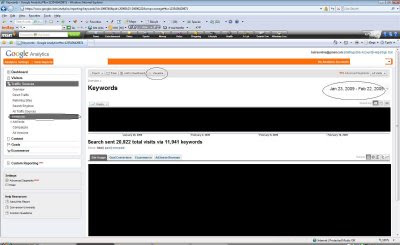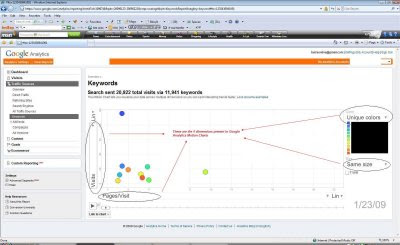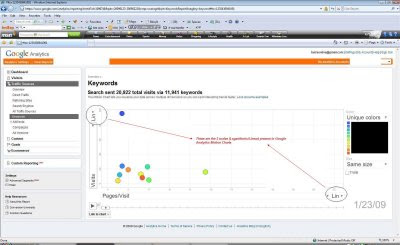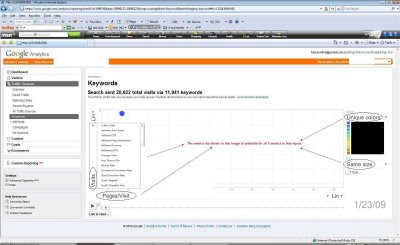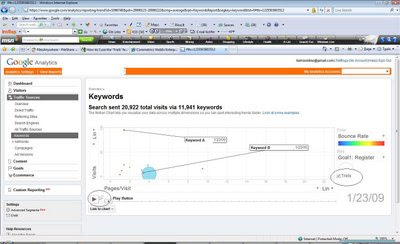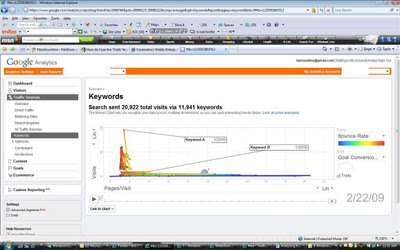To contribute your Flickr images for consideration, just:
:: Join and add photos to the archidose pool, and/or
:: Tag your photos archidose
To contribute your Flickr images for consideration, just:
:: Join and add photos to the archidose pool, and/or
:: Tag your photos archidose
Citigroup Inc. and the federal government agreed to a third rescue that will give U.S. taxpayers as much as 36% of the bank but expose their ownership stake to greater risk from the recession and housing crisis. The deal will punish existing shareholders of Citigroup, who will see their stake diluted by 74%, and likely do little to change the awkward relationship between federal officials and management of the New York company.Mysterious Plans Revisited
Depending on how many current holders of Citigroup preferred stock agree to a similar move, the company's tangible common equity could surge to $81.1 billion from $29.7 billion at Dec. 31. That would reverse the recent slide in tangible common equity -- a gauge of what shareholders would have left if the company were liquidated -- that fueled a downward spiral in Citigroup shares.
The conversion leaves taxpayers exposed to the risk of greater losses. The government's preferred holdings had stood ahead of common stock in Citigroup's capital structure, meaning they were less likely to lose value if the company's woes continue to mount. In addition, by converting much of the U.S. stake to common shares, Citigroup won't have to pay the hefty dividend payouts that were attached to the preferred stock.
"The government is bending over backwards to not go along the lines of nationalization," said Bernie Sussman, chief investment officer of Spectrum Asset Management, a unit of Principal Financial Group Inc. that manages about $6.9 billion in assets. "They had the alternative to completely zero out the common stock."
What Treasury now seems to be proposing is converting preferred to common.Shared Sacrifice
[Mish: No longer a proposal but a done deal]
It�s true that preferred stock has some debt-like qualities � there are required dividend payments, etc.. But does anyone think that the reason banks are crippled is that they are tied down by their obligations to preferred stockholders, as opposed to having too much plain vanilla debt?
I just don�t get it. And my sinking feeling that the administration plan is to rearrange the deck chairs and hope the iceberg melts just keeps getting stronger.
Over the past four years the U.S. private sector has borrowed an astonishing $3 trillion from the rest of the world. The money, directly and indirectly, came from countries such as China, Germany, Japan, and Saudi Arabia, which ran huge trade surpluses with America. Foreign investors trusted their funds to U.S. financial institutions, which used much of the money for mortgage loans.Too Big to Bail
But American families took on a lot more debt than they could comfortably afford. Now no one is sure how much of that towering sum the U.S. is going to pay back�and all the uncertainty is roiling the financial markets.
The Washington bailout debate boils down to this question: Who is going to bear the burden of the $3 trillion mistake?
Will low- and middle-income borrowers have to cut back on spending to pay their mortgage bills? Will taxpayers have to chip in big bucks to pay for defaults on those debts? Or will Washington act in a way that imposes large losses on foreign investors�in effect, repudiating some of the debt? The best outcome is shared sacrifice among borrowers, taxpayers, and foreign investors�but that result may be politically difficult to achieve.
Remembering that half of the liabilities of C, BAC and JPM are funded out of the bond markets and not via deposits, it should be clear to one and all that the US taxpayers are not in a position to subsidize the bond holders of these three banks, representing some $1.5 trillion in debt, if the deposits of these banks are to be protected. Some people, indeed, many people believe that we must avoid another Lehman Brothers type resolution where bondholders take a loss, but to us the only scenario where depositors of C, BAC, JPM do not take a loss is if we haircut the bond holders.Frogs Slowly Boiled In Order
There are no easy answers here, but the guiding principle left by the Founders that bankruptcy be used to quickly and finally resolve insolvency is instructive. In that sense, Lehman Brothers is the ideal example, not something to be avoided.
What is required in Washington is an adult conversation, between the US government on the one hand and the holders of the bonds of the largest banks on the other. Many of the bond holders of the large banks are foreign governments, central banks and investment funds and not a few of these sovereign names are in really serious financial difficulties. Since the receiverships for Lehman Brothers and Washington Mutual, where bond holders took a near total loss, these foreign investors have been vocal in demanding that US taxpayers protect them from further harm.
But to deflect these cowardly, expedient arguments, the US government must be willing to lead by example to show that there really is only one way to restore confidence in zombie banks: use receivership to wipe out the common and preferred shareholders, conserve the deposits and sell the good assets to new investors, and then restructure the remaining operations of the bank to maximize recovery to the bond holders and other creditors.
To contribute your Flickr images for consideration, just:
:: Join and add photos to the archidose pool, and/or
:: Tag your photos archidose
Mervyn King, the Governor of the Bank of England, has said it is "impossible to say" how much capital will be required to shore up the British banking system.I happen to agree with King that it is impossible to say precisely how much is needed to shore up banks, not just in the UK, but the Eurozone, US, China, Ireland, and Australia as well.
Mr King said it would take "many months" to establish the scale of toxic assets held by banks, and the scale of problems would change depending on the international economic outlook.
"That is not something that is easy to do or can be done quickly," he told the MPs. "It will require a much longer and more detailed assessment contract by contract."
"How much capital banks will need in the end is impossible to tell," he added.
But he also suggested public borrowing was too high as the UK entered the crisis and that had affected the Government's response to it. "I do think public debt matters. We get to this crisis with levels of public borrowing which were too high and that made it difficult," he said.
But, he added, that was a "million miles" away from the idea that Britain in any way resembled somewhere like Zimbabwe.
(via Dexigner)Ecological Urbanism: Alternative and Sustainable Cities of the Future
The conference will bring together design practitioners and theorists, economists, engineers, environmental scientists, politicians and public health specialists, with the goal of reaching a more robust understanding of ecological urbanism and what it might be in the future.
April 3-5, 2009
Piper Auditorium, Gund Hall, 48 Quincy Street,
KEYNOTE SPEAKERS
Cambridge, Massachusetts
Limited space�Register Now
Early Bird Registration (before March 10, 2009): $100
Standard Registration (after March 10, 2009): $125
Students: $20
Rem Koolhaas
Office for Metropolitan Architecture, Professor in Practice of Architecture and Urban Design, Harvard University GSD
Homi Bhabha
Anne F. Rothenberg Professor of the Humanities, Director of the Humanities Center at Harvard University

It's got floors like this -- EWWW!:
 There's usually a lot of this going on:
There's usually a lot of this going on: Hide your eyes...
Hide your eyes... AHHHHHH!!!!! I know!!!
AHHHHHH!!!!! I know!!!

I'm sceeeeered!!!
P.S. Your comments on my last post made ME all weepy. So sweet!!
P.P.S. I met one of my bloggy friends today! I can't wait to tell you about it. I also picked up an Easter/springy craft I will show you this weekend.

Construction of the Wainright Building in St. Louis, Missouri by Dankmar Adler and Louis Sullivan, 1890-1891.
To contribute your Flickr images for consideration, just:
:: Join and add photos to the archidose pool, and/or
:: Tag your photos archidose
Orders for U.S. durable goods fell for a record sixth consecutive month in January, signaling companies are cutting back on spending as customers worldwide retrench.Weekly Claims Hit 667,000
The 5.2 percent drop was more than twice as large as projected and followed a 4.6 percent decrease the prior month, the Commerce Department said today in Washington. Comparable data began in 1992. Excluding transportation equipment, orders fell 2.5 percent.
�Businesses are cutting back everyplace they can in order to survive the recession,� said Tim Quinlan, an economist at Wachovia Corp. in Charlotte, North Carolina. �The slowdown in business spending at the end of last year apparently picked up speed at the beginning of the year.�
Demand for non-defense capital goods excluding aircraft, a proxy for future business investment, plunged 5.4 percent after falling 5.8 percent the prior month. Shipments of those items, used in calculating gross domestic product, dropped 6.6 percent.
Orders excluding defense equipment decreased 2.3 percent and bookings for military gear dropped 35 percent.
Transportation equipment demand slumped 13.5, with autos down 6.4 percent for a second month. Commercial aircraft orders surged 82 percent following a 59 percent drop.
Today�s report showed orders for metals, machinery and computers also dropped. Only communications gear and aircraft advanced.
Tight credit and a global recession indicate demand for aircraft is likely to slump in coming months. Boeing Co., whose new 787 Dreamliner is now almost two years behind schedule, said Feb. 19 it lost another order for the plane in the prior week, bringing total cancellations to 33.
�Cancellations are especially affecting aircraft makers and other heavy industries like mining as customers feel the credit pinch,� said Brian Bethune, chief financial economist at IHS Global Insight in Lexington, Massachusetts.
Today�s report also showed order backlogs dropped and companies cut stockpiles. The 0.8 percent decline in inventories was the biggest since September 2003. Unfilled orders fell 1.9 percent, the most since January 2002.
Smaller backlogs indicate manufacturing will be slow to recover even after the economy gains traction.
In the week ending Feb. 21, the advance figure for seasonally adjusted initial claims was 667,000, an increase of 36,000 from the previous week's revised figure of 631,000. The 4-week moving average was 639,000, an increase of 19,000 from the previous week's revised average of 620,000.
The advance number for seasonally adjusted insured unemployment during the week ending Feb. 14 was 5,112,000, an increase of 114,000 from the preceding week's revised level of 4,998,000. The 4-week moving average was 4,932,250, an increase of 89,250 from the preceding week's revised average of 4,843,000.

The purpose of the CAP is to restore confidence throughout the financial system that the nation's largest banking institutions have a sufficient capital cushion against larger than expected future losses, should they occur due to a more severe economic environment, and to support lending to creditworthy borrowers.CAP Facts
Terms
- Capital provided under the CAP will be in the form of a preferred security that is convertible into common equity at a 10 percent discount to the price prevailing prior to February 9th.
- CAP securities will carry a 9 percent dividend yield and would be convertible at the issuer's option (subject to the approval of their regulator).
- After 7 years, the security would automatically convert into common equity if not redeemed or converted before that date.
- The instrument is designed to give banks the incentive to replace USG-provided capital with private capital or to redeem the USG capital when conditions permit.
- With supervisory approval, banks will be able to request capital under the CAP in addition to their existing CPP preferred stock.
- With supervisory approval, banks will also be allowed to apply to exchange the existing CPP preferred stock for the new CAP instrument.


Citigroup Inc. may announce a deal with the U.S. as soon as tomorrow that could raise the government's stake to as much as 40 percent, the Wall Street Journal reported, citing unidentified people familiar with the matter.Based on the above, expect taxpayers to be forced into supporting Citigroup at substantially above market prices. Remember, taxpayers are on the hook for $300 billion in debt guarantees for which we got a lousy $7 billion in preferred shares. Those shares are about to be diluted further.
The deal may cause Citigroup to sell part of the company's stake in Grupo Financiero Banamex, the Mexican bank, because Mexico prohibits companies with a more than 10 percent ownership by a foreign government from running a bank in Mexico, the newspaper said.
Federal Reserve Chairman Ben S. Bernanke said while the U.S. government may take �substantial� stakes in Citigroup Inc. and other banks, it doesn�t plan a full- scale nationalization that wipes out stockholders.Somehow taking a a �substantial� share in banks and injecting more money over time is nothing "like nationalization".
Nationalization is when the government �seizes� a company, �zeroes out the shareholders and begins to manage and run the bank, and we don�t plan anything like that,� Bernanke told lawmakers in Washington today.
In the case of Citigroup Inc., the government may end up with a �substantial� share of the lender�s stock, he said. Oversight of the company would be accomplished through regulators and by exerting �shareholder rights,� Bernanke said.
The Treasury Department, Federal Reserve and other banking regulators said in a joint statement on Feb. 23 that they stood ready to pump more capital into banks, or convert some of the government�s outstanding preferred shares into common, to prevent their failures. The stress tests are scheduled to begin today, according to that statement.
�We will see how their test works out, and we will see what evolves,� Bernanke said. �If in fact they have to convert even the existing preferred into common, then there could be a more substantial share of ownership of Citi by the U.S. government.�
I�m trying to be sympathetic to the various plans, or rumors of plans, for bank aid; but I keep not being able to understand either what the plans are, or why they�re supposed to work. And I don�t think it�s me.Tangible Common Equity for Beginners
So the latest is that we�re going to convert preferred stock held by the government to common stock, maybe.
Here�s my stylized picture of the situation:
What Treasury now seems to be proposing is converting some of the green equity to blue equity � converting preferred to common. It�s true that preferred stock has some debt-like qualities � there are required dividend payments, etc.. But does anyone think that the reason banks are crippled is that they are tied down by their obligations to preferred stockholders, as opposed to having too much plain vanilla debt?
I just don�t get it. And my sinking feeling that the administration plan is to rearrange the deck chairs and hope the iceberg melts just keeps getting stronger.
The initial government investments in Citigroup, back in October and November, were in the form of preferred shares. Between the two bailouts, the government put in $45 billion in cash and got $52 billion in preferred stock (the $7 billion difference was the fee for the guarantee on $300 billion of Citi assets). That preferred stock was designed to be much closer to debt than to equity: it pays a dividend (5% or 8%), it cannot be converted into common stock (so it cannot dilute the existing shareholders), it has no voting rights, and it carries a penalty if it isn�t bought back within five years. In fact, it is hard to distinguish from debt, except perhaps for the fact that, if Citi defaults on it (cannot buy the shares back) we don�t need to worry about systemic instability, because the government can absorb the loss. As preferred stock, these bailouts boosted Citi�s Tier 1 capital, but not its TCE.The Amazing, Shape-Shifting Convertible Preferred
Because of the newly perceived need for TCE, the bailout plan under discussion is to convert some of the preferred stock into common stock. Citi wouldn�t actually get any new cash from the government, but it would be relieved some of the dividend payments (currently close to $3 billion per year), and of the obligation to buy back the shares in five years.
The trick is deciding what price to convert the shares at. All of Citi�s common shares today are worth around $12 billion, so if you converted $52 billion of preferred shares into common, the government would suddenly own over 80% of Citi. (In the conversion, you divide the value of the preferred stock you are converting by the price of the common stock, and that yields the number of common shares the government now owns.)
The Geithner team is still continuing the Paulson policy of avoiding anything that looks like nationalization, so the talk is that the government ownership will be capped at 40%; that means the government could only convert about $8 billion of its preferred stock. There will probably be some clever manipulation of the numbers to say that the preferred stock is actually worth less than $52 billion, or that it should be converted at a higher price than the current market price of the stock.
(This seems like a blatant subsidy to me, since new investors buying large blocks of stock in a public company typically pay less than the current market price.) There is also talk of trying to get some of Citi�s other preferred stock holders to convert as well, because the more they convert, the more common shares, and hence the more the government can have without going over the 40% limit.
I have been asked whether there was anything in Chairman Bernanke�s speech yesterday that changed my outlook on the prospects of nationalization for some of our largest financial institutions. In a word: �No.�I'm sticking with my version of the story: The Fed Is Clueless and Banks are Zombified.
Knowing that there are teams of professionals on Wall Street dedicated to giving new hybrid securities cute names, let me suggest that the government henceforth refer to these incremental investments as �Maybetorily� Convertible Preferreds - as in, maybe they're straight preferred stock, maybe they're common stock, maybe they're gone altogether - it all depends on how bad the economy gets from here.
How these Maybetorily Convertible securities can in any way provide the impetus for further private-sector investment into the common stock of our banking system confounds me. As I see it, if implemented, existing common shareholders have at best the same upside they previously had, with exponentially larger downside.
So rather than throwing the frogs (banks) into nationalizing boiling water immediately, the government is going to place them in a tepid bath and watch, suggesting, at least this week, that while they may have to turn up the temperature a little bit (�temporarily�), no one will ultimately get burned.
Maybe, maybe not.


Federal Reserve Board chairman Ben Bernanke tried to assure Congress and investors that federal regulators are not grasping at straws in the response to the financial crisis.My Translation:
"We're not making it up," Bernanke told the House Financial Services panel.
"We're working along a program that has been applied in various contexts."
"We're not completely in the dark."
Bernanke is trying to reinforce his message to Congress that the Fed and the Obama administration now have at least the outlines of a bank rescue plan in place that will show results over time and that banks are not on an out-of-control course to nationalization.My Comment: The only reason banks are not on an "out-of-control course to nationalization" is Bernanke is on an "out-of-control" mission to rescue banks regardless of what it costs taxpayers.
Bernanke assurance Tuesday to the Senate Banking Committee that the federal government doesn't want to nationalize the nation's largest banks was cited as a major factor in the stock market's rebound. Bernanke said regulators would ensure than banks did not turn into zombie banks.My Comment: Now Bernanke wants to take credit for a one day relief rally as if correlation was causation. Furthermore, it's impossible for banks to turn into Zombie banks. They are already Zombie Banks, kept alive by the blood of taxpayers as explained in Bernanke's Hide and Seek Delaying Tactics.
Bernanke said that the government was prepared to inject capital to fix holes in the banks caused to the sudden sharp drop in their assets. But the size of the holes remains an open question.My Comment: If the size of the holes is "an open question" then so is the amount of taxpayer blood needed to rescue them.
Rep. Barney Frank, the Massachusetts Democrat and chairman of the House panel, told members to curb their anger for the cost of the bailout. He said that it was impossible to send all culprits in the crisis to the gallows.My Comment: For starters we should send the Fed, Geithner, and Barney Frank to the gallows.
Another interesting point from the first day of the hearing was that the idea that the Fed was planning to buy long-term Treasurys has moved to the back-burner.How long before that idea is back on the front burner? No one knows because the Fed is making up the rules of the game day-by-day.
Japan�s exports plunged 45.7 percent in January from a year earlier, resulting in a record trade deficit, as recessions in the United States and Europe smothered demand for the country�s cars and electronics.German Contraction Driven by Export Slump
The shortfall widened to 952.6 billion yen ($9.9 billion), the Finance Ministry said on Wednesday in Tokyo. It was the biggest deficit since 1980, the earliest year for which there is comparable data. The drop in shipments abroad eclipsed a record 35 percent decline set in December.
Exports to the United States tumbled 52.9 percent from a year earlier, and shipments to Europe also posted big declines. The collapse is likely to force Japanese companies to keep firing workers and closing factories, worsening an economy that shrank the most in 34 years last quarter.
German exports slumped in the fourth quarter, causing Europe�s largest economy to contract the most in 22 years.European Truck Sales Plunge 35%
Exports dropped 7.3 percent from the previous quarter and company investment in plant and machinery declined 4.9 percent, the Federal Statistics Office in Wiesbaden said today. Companies are scaling back production and cutting jobs as global growth grinds to a halt and demand for exports wanes. The German government expects the economy to contract 2.25 percent this year, its worst performance since World War II.
Volkswagen AG, Europe�s biggest carmaker, said sales dropped 21 percent in January from a year earlier, while deliveries at Bayerische Motoren Werke AG, the world leader in luxury autos, fell 24 percent. MAN AG, Europe�s third-largest truckmaker, said it will cut costs further and extend reductions in employees� working hours after declining sales caused fourth-quarter profit to plunge by almost half.
European heavy-truck sales plunged 35 percent last month, more than double the drop in December, as the global recession ravaged the region�s main markets.Toyota Cuts January Vehicle Production by Most Since 1987
Manufacturers sold 20,068 trucks weighing 16 metric tons or more in January, compared with 30,755 a year earlier, the Brussels-based European Automobile Manufacturers Association said in a statement today.
Spain and the U.K. led the slump among larger western European markets, with declines of 76 percent and 40 percent respectively. The U.K. turned negative from a 13 percent increase in December. Germany, where business confidence hit a 26-year low this month, suffered a 28 percent January drop.
Truck sales have waned as the global financial crisis erodes demand for the transportation of goods, causing Daimler AG, Volvo AB and MAN AG, Europe�s top three manufacturers, to cut thousands of jobs. Sales plunged 58 percent in the 10 eastern countries that joined the European Union in 2004, with Poland, the biggest, suffering a 76 percent decline.
Purchases of vans weighing less than 3.5 tons tumbled 37 percent in January to 114,664, while demand for vehicles exceeding 3.5 tons, including heavy trucks, fell 33 percent to 27,336, according to the ACEA. Registrations of new buses and coaches declined 16 percent.
Toyota Motor Corp., Japan�s biggest automaker, slashed global production last month by the most in more than two decades as the recession and a credit crunch decimate demand for new automobiles.Without jobs there is little reason to believe this economy is close to turning around. Yet, stimulus plan or not, there is simply no reason for jobs to pick up any time soon. I expect another half million jobs will be lost in each of the next couple months.
Toyota�s output fell 43 percent to 413,285 vehicles in January. Honda Motor Co.�s production dropped 33 percent to 226,551 vehicles and Nissan Motor Co.�s slid 54 percent to 145,286 units, the companies said separately today.
Japanese carmakers are cutting output and earnings forecasts as slowing economies and rising unemployment in their largest markets deter consumers from buying new vehicles. Toyota�s domestic output is being reduced by half this quarter, compared with a year earlier, as exports plunge and it heads for its first operating loss in 71 years.
�Things will get worse before they get better.� said Ed Rogers, chief executive officer of Tokyo-based hedge fund adviser Rogers Investment Advisors Y.K. �Nobody is buying cars -- there is a global freeze of commerce.�
Honda�s global production decline in January was its biggest since at least 1999, as exports to the U.S. fell 62 percent in the period, the company said.
Nissan, which posted its biggest production decline since at least 1984 last month, estimates domestic output will tumble 16 percent to 1.06 million vehicles this fiscal year. Nissan last month said its U.S. plants will build vehicles only four days a week indefinitely.
The automaker�s total exports fell 62 percent last month, the most in at least 38 years. Exports to North America slid 85 percent.
Mazda Motor Corp., Japan�s second-largest car exporter, said global production fell 63 percent to 45,548 units in January.
Fuji Heavy Industries Ltd., the maker of Subaru-brand cars, said global production fell 32 percent to 31,654 vehicles in January. Suzuki Motor Corp., Japan�s second-largest minicar maker, said global production fell 20 percent to 177,085 units.

The Sony S950S is easy to use and small and light to carry anywhere. Featuring face detection to keep portraits in focus, the Sony S950S has high sensitivity sensor that enables great pictures in low light. Picture Motion Browser (PMB) software is pre-loaded in this cyber-shot to manage the large no of photos to a simplified collection. Finally shots can be reviewed on the large 2.7 LCD viewfinder.
